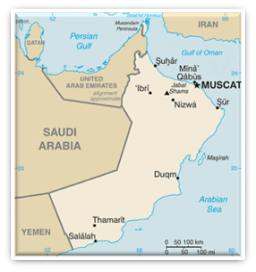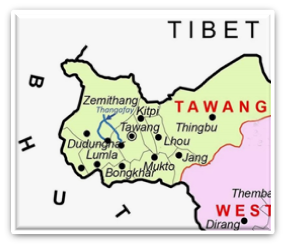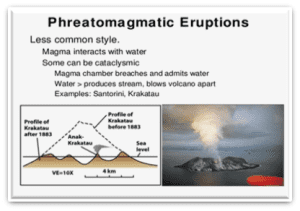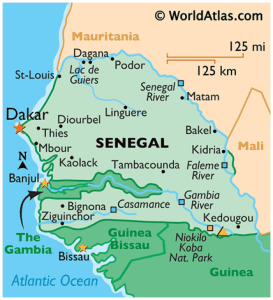(Newspapers, PIB and other important sources)
Prelim and Main
1. Maharashtra Assembly unanimously clears 10% Maratha quota; CM Shinde says it will survive test of law READ MORE
2. US vetoes Security Council vote on Gaza cease-fire, pushes alternative READ MORE
3. India, Sri Lanka take trade pact talks ahead READ MORE
4. Inflation expectations may stabilise, edge down going ahead: RBI bulletin READ MORE
5. Rules that edge out women from employment for getting married are ‘coarse’, unconstitutional: Supreme Court READ MORE
6. Global study quantifies rise in blood clots, heart inflammation following COVID-19 vaccination READ MORE
7. Raisina Dialogue begins today: Everything you need to know about the conference READ MORE
8. What is Article 142, invoked by Supreme Court to overturn Chandigarh mayoral poll results? READ MORE
9. The brightest object in the universe is a black hole that eats a star a day READ MORE
Main
GS Paper- 1
1. A 100-year-old story of British brutality & Sikh sacrifice READ MORE
2. Caste census lessons for new government in Bihar READ MORE
3. Are Dalits homogenous or heterogenous? READ MORE
4. Calm assessment: On the extent of ‘deemed forest’ READ MORE
5. Heed SC’s directive on saving forests READ MORE
6. Definition of forest: SC underscores concerns over land diversion READ MORE
GS Paper- 2
POLITY AND GOVERNANCE
1. Having panchayats as self-governing institutions READ MORE
2. Judicial clarity on free speech READ MORE
3. SC examines divorced Muslim women’s right to maintenance under Section 125 of the CrPC READ MORE
4. TN resolution voices South India’s concerns READ MORE
5. SC bonds ruling a reminder how weak India’s key institutions are READ MORE
SOCIAL ISSUES
1. Why are Indians falling ill so frequently? READ MORE
INTERNATIONAL ISSUES
1. Tolerance, coexistence taking root in UAE READ MORE
2. How effective is the UN in conflict mitigation READ MORE
3. India is on the right track in Nepal READ MORE
GS Paper- 3
ECONOMIC DEVELOPMENT
1. MSP is the minimum support farmers need to stay in business READ MORE
2. Small farmers’ interests overlooked READ MORE
3. Rate Cut Dilemma READ MORE
4. Green Revolution, 2.0 READ MORE
5. Towards Climate-Smart Agriculture (CSA): Strategies, obstacles, and visions for a sustainable future READ MORE
ENVIRONMENT AND ECOLOGY
1. Warming up to climate change: How does climate change impact extreme weather events? READ MORE
2. Air pollution needs decentralised, micro solutions READ MORE
SCIENCE AND TECHNOLOGY
1. Dark Net Woes READ MORE
2. Keep it wholesome: On shaping a national cervical cancer control programme READ MORE
INTERNAL SECURITY
1. Tech Wars or Old Battlefields: Lessons from the Recent Conflicts READ MORE
2. The future of counterterrorism: Evolving online tools and tactics READ MORE
DISASTER MANAGEMENT
1. In Morbi’s debris, the role of the State in PPP projects READ MORE
GS Paper- 4
ETHICS EXAMPLES AND CASE STUDY
1. Religion, a precise science of creating clarity READ MORE
2. Well done, Milords: SC did the right thing in overturning Chandigarh mayor’s elections. Poll process integrity defines democracy READ MORE
3. Work and wisdom READ MORE
4. Seeking truth in the world of deception READ MORE
Questions for the MAIN exam
1. Gram sabhas have a significant role in fostering self-sufficiency and sustainable development at the grass-roots level by leveraging local resources for revenue generation. Examine.
2. Reservations alone can’t alleviate economic deprivation; they must be complemented by the increased availability of jobs and strong, inclusive growth. Comment in the light of recent developments.
3. Discuss why the UN is facing myriad obstacles in its quest for global harmony. How structural drawbacks to the intertwined interests of its members are affecting its effectiveness in conflict mitigation?
4. The Green Revolution transformed India from a ship-to-mouth existence to self-reliance, but it also sowed the seeds of its own destruction, leading to a grave farming crisis in the country. Examine.
5. Delimitation of constituencies on the basis of the present population will not only lead to inequitable representation in parliament but it will violate the 84th Constitutional amendment. Examine.
QUOTATIONS AND CAPTIONS
- Broad-mindedness is related to tolerance; open-mindedness is the sibling of peace.
- There is a need to educate elected representatives and the public on the significance and the need for panchayats to be able to survive on its own resources.
- Gram sabhas have a significant role in fostering self-sufficiency and sustainable development at the grass-roots level by leveraging local resources for revenue generation.
- There is a need to educate elected representatives and the public on the significance of raising revenue to develop panchayats as self-governing institutions.
- Small farmers lack the means to be part of MSP-driven procurement system. Despite the focus of the farmers’ talks on pulses, this needs to be addressed.
- Withdrawing from regional trading agreements and insulating the farm sector may render it vulnerable to price volatility, with direct implications for domestic food price inflation.
- Reservations alone can’t alleviate economic deprivation. They must be complemented by the increased availability of jobs and strong inclusive growth.
- Reservations alone can’t alleviate economic deprivation; they must be complemented by the increased availability of jobs and strong, inclusive growth.
- From structural drawbacks to the intertwined interests of its members, the UN faces myriad obstacles in its quest for global harmony.
- The Green Revolution transformed India from a ship-to-mouth existence to self-reliance. But the Green Revolution was not an unmixed blessing. Over the decades which followed, it sowed the seeds of its own destruction, leading to a grave farming crisis in the country.
- In the complex tapestry of global economic dynamics, India finds itself at a crossroads as the murmurs of a delayed rate cut gain momentum.
- Delimitation of constituencies on the basis of the present population will lead to inequitable representation in parliament.
- As terrorists and violent extremists adapt their online tactics in the era of AI, counterterrorism efforts should also evolve, employing new tools and approaches.
- Climate-Smart Agriculture holds promise in building a robust agri-food system amidst the intensifying effects of climate change, however, there is a pressing need to enhance current initiatives.
ESSAY TOPIC
- We need to move forward on AI development but we also need to be mindful of its very real dangers.
50-WORD TALK
- The demands of agitating farmers encapsulate broader systemic inequities within India’s farming landscape. While addressing these demands is crucial, sustainable solutions must prioritise the empowerment of small and marginal farmers. Assured support for pulses must be accompanied by marketing and financial reforms.
Things to Remember:
- For prelims-related news try to understand the context of the news and relate with its concepts so that it will be easier for you to answer (or eliminate) from given options.
- Whenever any international place will be in news, you should do map work (marking those areas in maps and exploring other geographical locations nearby including mountains, rivers, etc. same applies to the national places.)
- For economy-related news (banking, agriculture, etc.) you should focus on terms and how these are related to various economic aspects, for example, if inflation has been mentioned, try to relate with prevailing price rises, shortage of essential supplies, banking rates, etc.
- For main exam-related topics, you should focus on the various dimensions of the given topic, the most important topics which occur frequently and are important from the mains point of view will be covered in ED.
- Try to use the given content in your answer. Regular use of this content will bring more enrichment to your writing.





